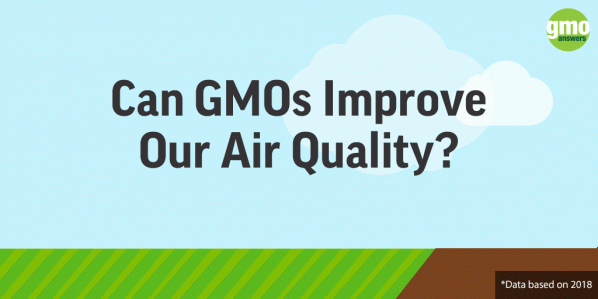Question
What is the connection between GMOs and neonicotinoids?
What is the connection between GMOs and neonicitinoids?
Submitted by: Carl Martin
Answer
Expert response from Chris Sansone
Global Regulatory Affairs Manager – Insect Resistance Management (Americas), BASF
Thursday, 04/09/2014 17:46
There is no connection between genetically modified (GM) crops and neonicotinoids. Both can be used separately or together by homeowners and growers. Homeowners, especially in urban areas, use neonicotinoids to protect ornamentals and citrus trees from the Asian citrus psyllid and citrus greening and to protect their trees from the emerald ash borer, the Asian longhorned beetle and the hemlock woolly adelgid, and growers use both neonicotinoids and GM crops to manage damaging insect populations.
The reason for using seed treatments is that seeds and seedlings are very vulnerable to attack. The seed is attacked by insects, nematodes and diseases as soon as it enters the ground. A brief list of the insects that attack the seed and seedlings include white grubs, seed corn maggots, wireworms and southern corn rootworms. Aboveground, the seedlings can be attacked by cutworm, thrips, aphids and cotton aphids.
However, when I used the search term “neonicotinoids and GMO,” Google returned 108,000 results. In reading many of the results, the common denominator seems to be that GM corn seed is treated with a neonicotinoid, so a connection must exist.
The problem with this supposed connection is that many growers use seed treatments, some containing neonicotinoids, on crops that aren’t GM. For instance, insecticide seed treatments are used in grain sorghum, wheat and vegetable crops — none of which is commercially available as a genetically modified crop. So the vegetables you eat today are not GM but may need a seed treatment neonicotinoid to thrive.
Growers typically invest anywhere from $45 to $94 per acre (though the cost could go higher or lower, depending on a variety of factors) for seed and thus make informed decisions about how to protect their investment from any damage. Growers take into consideration the past field history (was the field damaged last year by soil pests?), weather conditions (cool, wet soils slow seed germination, making the seed susceptible to attack for a longer time period) and tillage history (see this publication for some impacts of tillage on insects), as well as the cost of the seed treatment. They make these decisions about both GM and non-GM crops.
Answer
Expert response from Chris Sansone
Global Regulatory Affairs Manager – Insect Resistance Management (Americas), BASF
Thursday, 04/09/2014 17:46
There is no connection between genetically modified (GM) crops and neonicotinoids. Both can be used separately or together by homeowners and growers. Homeowners, especially in urban areas, use neonicotinoids to protect ornamentals and citrus trees from the Asian citrus psyllid and citrus greening and to protect their trees from the emerald ash borer, the Asian longhorned beetle and the hemlock woolly adelgid, and growers use both neonicotinoids and GM crops to manage damaging insect populations.
The reason for using seed treatments is that seeds and seedlings are very vulnerable to attack. The seed is attacked by insects, nematodes and diseases as soon as it enters the ground. A brief list of the insects that attack the seed and seedlings include white grubs, seed corn maggots, wireworms and southern corn rootworms. Aboveground, the seedlings can be attacked by cutworm, thrips, aphids and cotton aphids.
However, when I used the search term “neonicotinoids and GMO,” Google returned 108,000 results. In reading many of the results, the common denominator seems to be that GM corn seed is treated with a neonicotinoid, so a connection must exist.
The problem with this supposed connection is that many growers use seed treatments, some containing neonicotinoids, on crops that aren’t GM. For instance, insecticide seed treatments are used in grain sorghum, wheat and vegetable crops — none of which is commercially available as a genetically modified crop. So the vegetables you eat today are not GM but may need a seed treatment neonicotinoid to thrive.
Growers typically invest anywhere from $45 to $94 per acre (though the cost could go higher or lower, depending on a variety of factors) for seed and thus make informed decisions about how to protect their investment from any damage. Growers take into consideration the past field history (was the field damaged last year by soil pests?), weather conditions (cool, wet soils slow seed germination, making the seed susceptible to attack for a longer time period) and tillage history (see this publication for some impacts of tillage on insects), as well as the cost of the seed treatment. They make these decisions about both GM and non-GM crops.
How Do GMOs Benefit The Environment?



